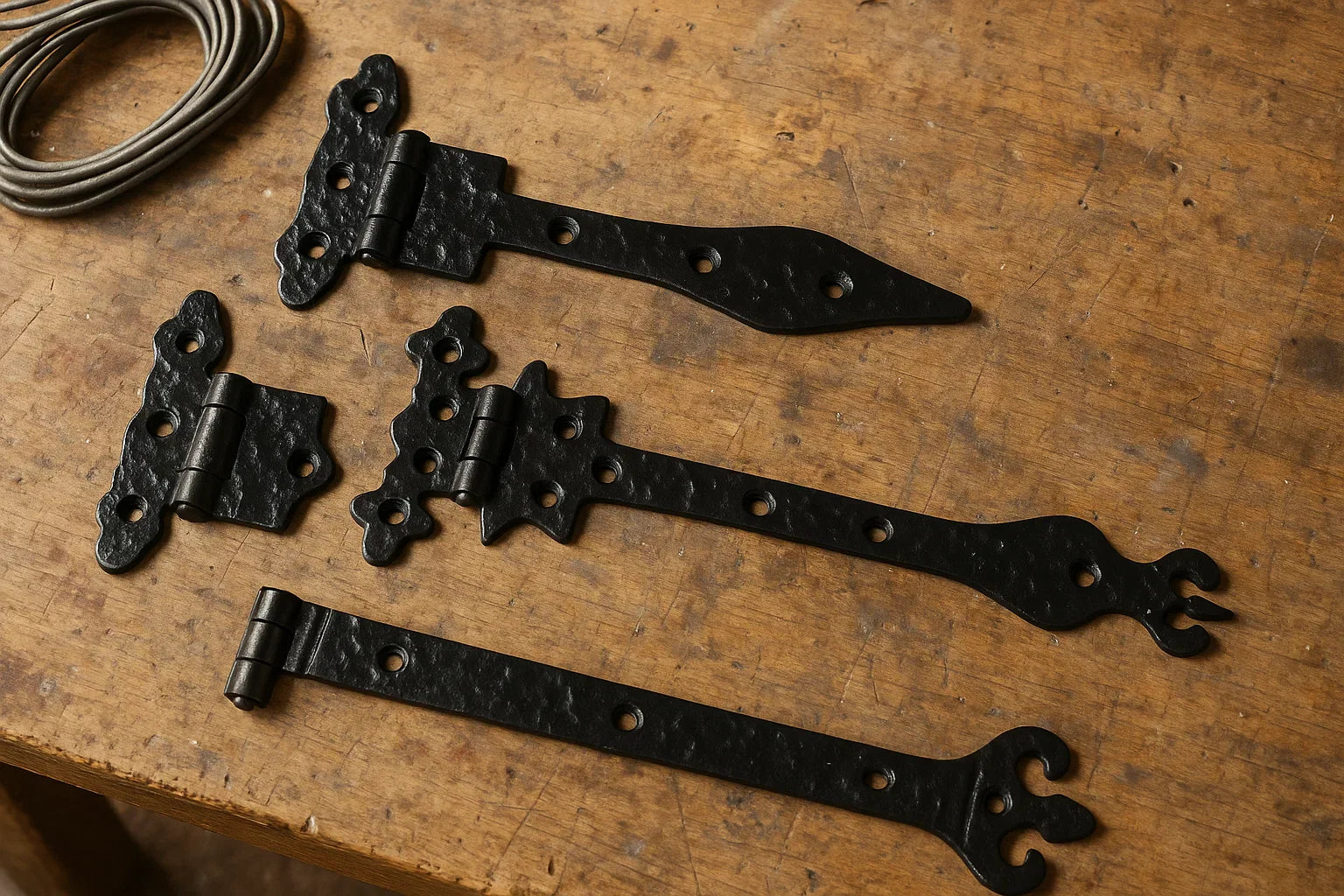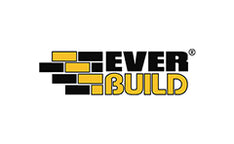Each Type of Hinge & What They Do
Quick answer: Most internal doors use butt or ball-bearing hinges. Need extra clearance past wide architraves? Choose parliament. Lifting over carpets? Rising butt. Self-closing or saloon doors? Spring/double-acting. Invisible cabinet looks? Concealed (cup). Heavy gates? Hook & band / T-hinge. Long lids? Piano/continuous.
How to Choose the Right Hinge (Fast)
- Door weight & use: Heavier or frequently used doors benefit from ball-bearing or 3 hinges instead of 2.
- Clearance needs: Need the door to throw further past wide trims/radiators? Parliament hinges project the door out.
- Floor/carpet lift: Scraping on carpet? Rising butt lifts the leaf as it opens.
- Concealed look: Cabinets = concealed cup; flush minimalist doors = SOSS.
- Self-closing or both-way swing: Spring (double-acting) hinges.
- Exterior / corrosion: Use stainless steel (304 indoors, 316 coastal) or hot-dip galvanised for gates.
- Fire doors: Must use certified fire-rated hinges (usually 3 per door) with matching screws and intumescent pads where specified.
UK size shorthand: 76 mm (3") butt = light internal doors; 100–102 mm (4") for heavier/solid doors. Most internal doors use 2–3 hinges; exterior/solid core typically 3.
Butt Hinges (Standard)
The everyday door hinge: two leaves with a central pin/knuckle. Mortised into door and frame for a neat fit.
Use for: Most internal doors. Choose stainless for bathrooms and exteriors.
Pros: Cheap, widely available. Watch for: Cheaper plain-bearing versions can squeak/wear on heavy doors.
Browse Butt Hinges - Fixed Pin — Multiple Finishes & Sizes Browse Butt Hinges - Loose Pin — Multiple Finishes & SizesBall-Bearing Butt Hinges
A premium butt hinge with ball races in the knuckle for smoother, quieter action and longer life.
Use for: Heavy, frequently used, or solid-core doors.
Pros: Durable, smooth; ideal for high-traffic. Watch for: Slightly higher cost.
Browse Ball Bearing Butt Hinges — Multiple Finishes & SizesFire-Rated Hinges
Tested and certified for fire doors. Typically stainless steel, often with ball bearings. Must be installed per the door set certification (usually 3 hinges and correct screws).
Use for: Any certified fire door (FD30/FD60 etc.).
Browse Fire Door Hinges — Multiple Finishes & SizesRising Butt Hinges
Special knuckle geometry lifts the door a few millimetres as it opens, then drops it as it closes.
Use for: Doors scraping carpets/thresholds; accessible WC doors that need auto-closing without a closer.
Pros: Clears carpets neatly. Watch for: Handed (left/right); not ideal where doors must stay open unaided.
Browse Rising Butt Hinges — Multiple Finishes & SizesParliament / Projection Hinges
Wide-throw hinges that project the door clear of thick architraves, shutters or deep reveals when opened.
Use for: French doors, doors behind wide trims or radiators, shutters.
Pros: Maximises opening width. Watch for: Larger leaves require more fixing length—use proper screws.
Browse Parliament Hinges — Multiple Finishes & Sizes
Flush Hinges
Leaves nest so they can be surface-mounted without chiselling a mortise.
Use for: Light internal doors, cupboard doors, quick retrofits.
Pros: Fast fitting. Watch for: Lower load capacity; not for heavy doors.
Browse Flush Hinges— Multiple Finishes & SizesConcealed (Cup/Euro) Hinges
Common on kitchen cabinets. A 35 mm cup sits in a bored hole; arm mounts to the carcass with clip-on plates. Options include soft-close and different overlays.
Use for: Cabinets and furniture (overlay, half-overlay, inset).
Pros: Invisible from front, adjustable, soft-close. Watch for: Needs accurate 35 mm boring; choose the correct overlay type.
SOSS / Invisible Hinges
Fully concealed within door and frame when closed—no visible knuckle.
Use for: Flush interior doors, hidden doors, premium joinery.
Pros: Ultra-clean look. Watch for: Precise routing; weight ratings vary—check specs and use multiple units.
Spring / Double-Acting Hinges
Allow a door to swing both ways and return to centre automatically via adjustable springs.
Use for: Café/saloon doors, kitchen pass doors.
Watch for: Not for fire doors; check thickness/weight limits.
Browse Doublew Washered Hinges — Multiple Finishes & SizesPivot Hinges (Center/Floor)
Pivot pins at top and bottom carry the door; the pivot point can be centred or offset. Heavy versions use floor springs.
Use for: Wide/frameless doors, commercial entrances, concealed pivot aesthetics.
Pros: Clean look, handles large doors. Watch for: Specialist fitting; floor/ceiling prep required.
Pivot Hinges - Available Here
Piano / Continuous Hinges
A long, continuous hinge running the full length of a lid or door, spreading the load evenly.
Use for: Ottomans, toy boxes, bench seats, lightweight doors, access panels.
Pros: Prevents racking; neat. Watch for: Choose stainless for damp areas.
Piano / Continuous Hinges - Available Here
Strap / T-Hinges
Long decorative straps provide leverage and support on wide, ledged & braced doors and gates. A T-hinge has a narrow leaf on the frame and a long strap on the door.
Use for: Sheds, cottage doors, light/medium gates.
Pros: Easy to fit; rustic look. Watch for: Choose heavy-duty for large doors; galvanised for outdoors.
Browse Tee / T Hinges — Multiple Finishes & SizesHook & Band (Gates)
Two-part system: a band bolts to the gate; a hook (gudgeon) fixes to the post. Often cranked to centre the gate in the opening and adjustable for alignment.
Use for: Field & garden gates, farm doors.
Pros: Very strong, adjustable, easy to lift the gate off when needed. Watch for: Size bands according to gate width/weight; use proper coach screws/bolts.
Browse Hook & Band Hinges — Multiple Finishes & SizesLift-Off (Loose Pin) Hinges
Allow the door to be lifted off the hinges without removing screws. Available handed (left/right).
Use for: Doors needing occasional removal (maintenance, access panels).
Browse Lift Off Hinges — Multiple Finishes & SizesSecurity / Dog-Bolt Hinges
Feature anti-jemmy pins or security studs that interlock when the door is closed, protecting outward-opening doors even if the hinge pin is removed.
Use for: Outward-opening external doors, sheds.
Dog Bolt Hinges - Available Here
H & HL Hinges
Traditional strap-style hinges shaped like the letters H or HL that add racking resistance on ledged-and-braced doors.
Use for: Period joinery, cottage doors.
Butterfly / Decorative Hinges
Surface-mounted, shaped leaves for visual appeal.
Use for: Light cupboard doors, decorative furniture.

Friction Stay (uPVC/Aluminium Windows)
Scissor-style hinges that hold a window open at set positions using friction pads.
Use for: Side/top-hung casement windows; egress and easy-clean variants available.
Backflap & Other Specialty Hinges
Backflap: Large leaf area for thin/weak materials (e.g., stage flats). Offset: Moves pivot line to increase clear opening. Half-surface/half-mortise: Mix surface and mortised leaves for tricky frames.
Browse Hook & Band Hinges — Multiple Finishes & Sizes
Gate & Field-Gate Hinges (What to Use)
- Standard timber field gate: Top hook & band (straight or cranked) + bottom adjustable hook; 19–24 mm pins; band ≈ 1/3–1/2 gate width.
- Posts out of plumb / easy tweak: Adjustable hook & band (slotted or threaded J-bolt gudgeon).
- Deep reveals / need to centre gate: Cranked bands or reversible hinges.
- Metal frame gate: Weld-on bullet/bearing hinges (greaseable).
- Sloped drive scraping: Rising gate hinge set.
- Security: Anti-lift collars; one pin up, one down; through-bolts where possible.
Quick Sizing & Fit Notes
- Internal doors (hollow core): 2 x 76 mm butt hinges; heavy use → 3 x 76–100 mm ball-bearing.
- Solid core/external: 3 x 100–102 mm stainless ball-bearing; use all supplied screws.
- Carpet clearance: Try rising butt before trimming doors; expect ~8–10 mm lift at full swing (varies by model).
- Bathrooms/coastal: Stainless 304 (general wet rooms) or 316 (coastal/exposed). Gates: hot-dip galvanised or stainless.
- Parliament throw: Choose width to clear the obstacle (architrave/radiator); thicker leaves need longer screws.

























